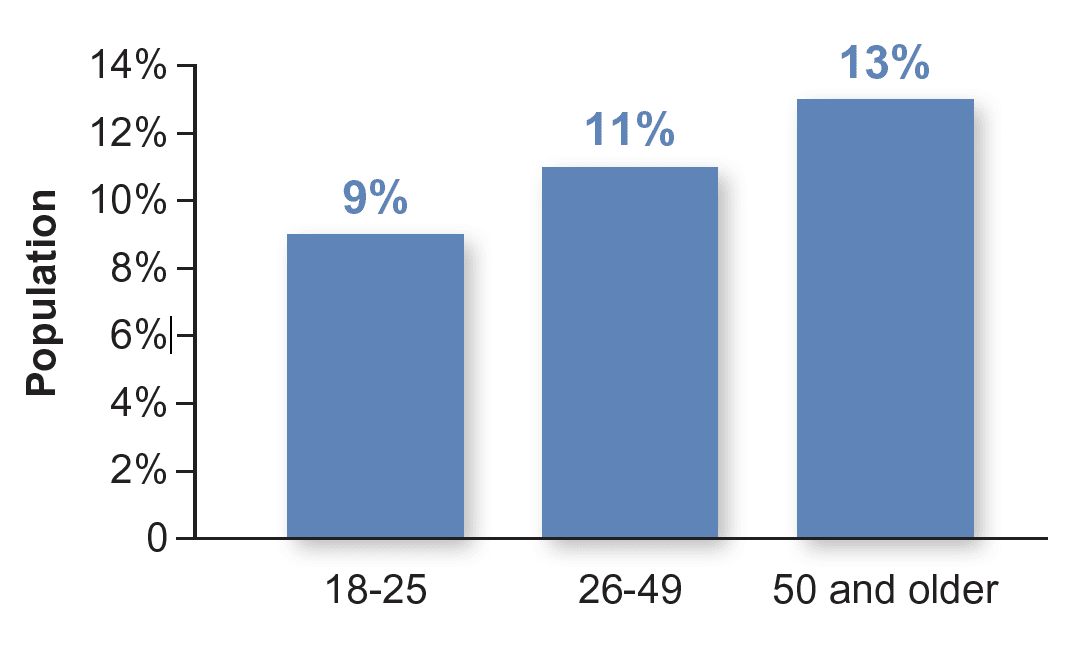Benzodiazepines are powerful medications that can be effective in the management of anxiety and insomnia. However, their benefit is time-limited and benzodiazepine use should be discontinued after 4-6 weeks. Yet many older adults are prescribed long-term benzodiazepines.
Older adults use benzodiazepines more than younger adults1

In long-term use for these conditions, the risks usually outweigh the benefits.
Common adverse effects of benzodiazepines
- drowsiness, lethargy, fatigue
- excessive sedation
- disturbances of concentration or attention
- falls
Serious risks from benzodiazepines
- withdrawal, addiction, abuse, and dependence
- falls and hip fracture
- cognitive impairment
- motor vehicle accidents
- mortality
Reducing benzodiazepines
Taper slowly to help patients stop long-term benzodiazepine use. Abrupt withdrawal can result in delirium, psychosis, or hallucinations.
Develop an individualized taper2 Discuss the risks and benefits of benzodiazepines with patients and engage them in the plan to taper. Use a slow reduction (e.g., 25% every 2 weeks) and monitor for symptoms of withdrawal. Providing alternate recommendations to address symptoms of insomnia (e.g., cognitive behavioral therapy) or anxiety (e.g., selective serotonin reuptake inhibitor) can help with rebound symptoms.
Successful tapering is possible
More than 65% of benzodiazepine users are able to discontinue use.2,3
Resources for Providers
Resources for Patients
Click here to contact us for more information about Alosa’s full academic detailing package.
